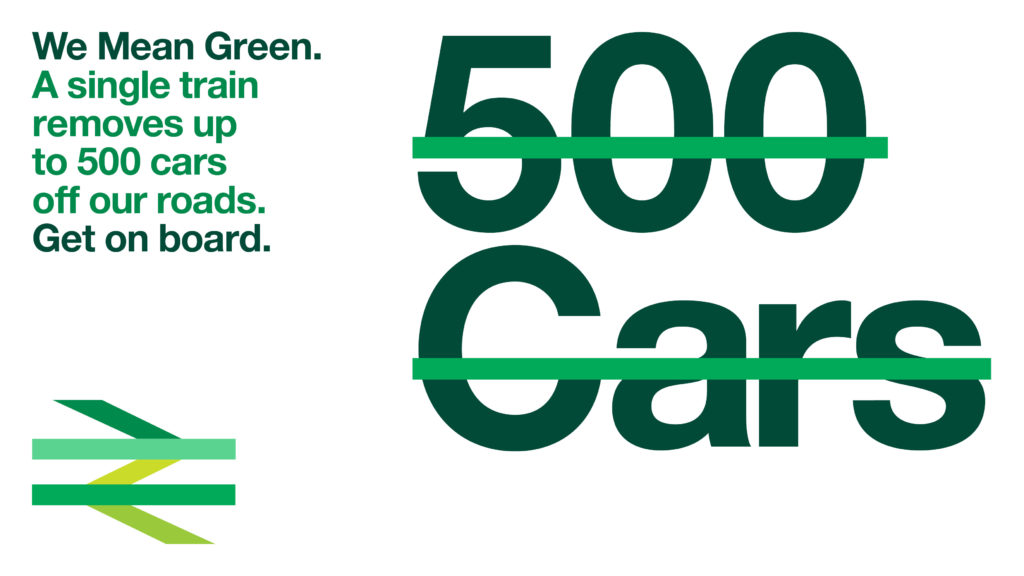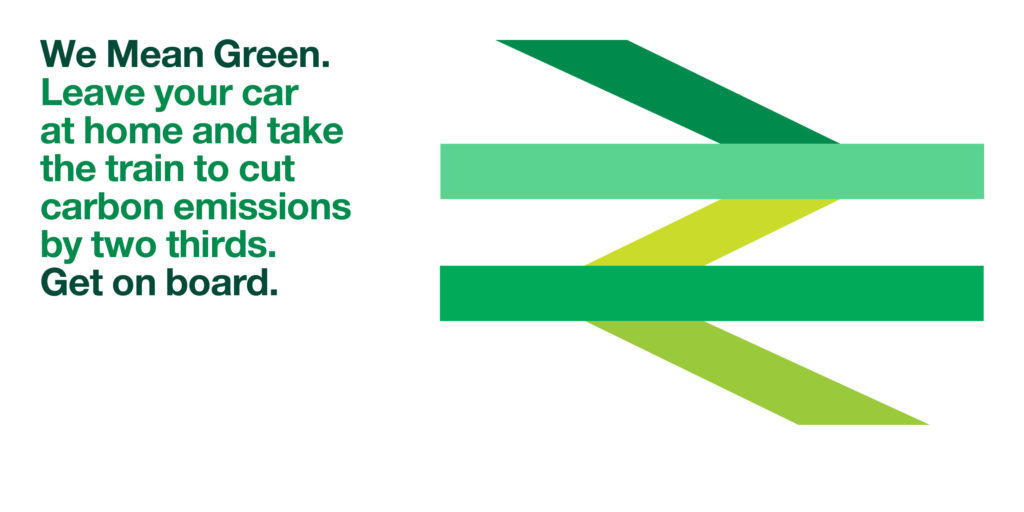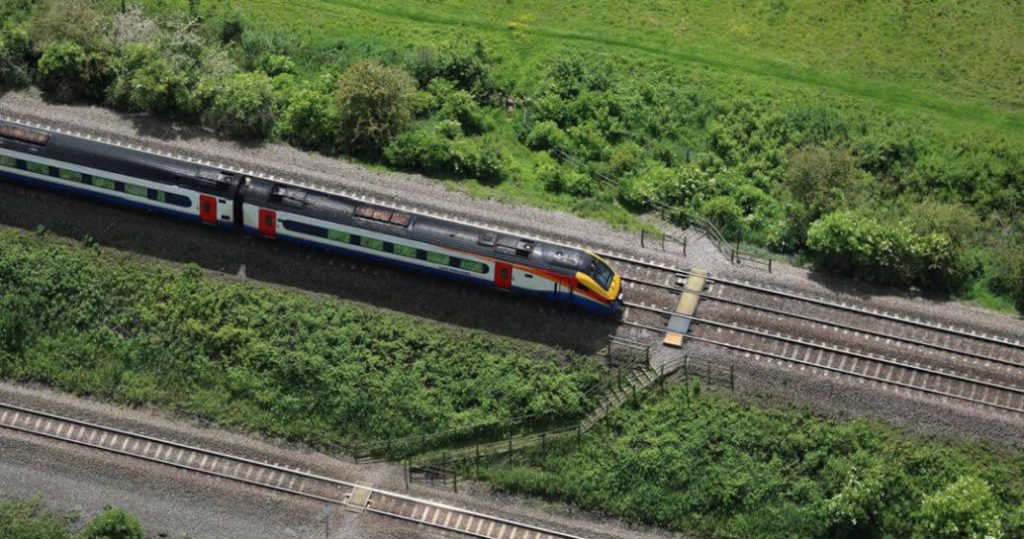National Rail double arrow logo goes green in new campaign ahead of COP26.
Today on World Car Free Day (22 September), the rail industry has launched the We Mean Green campaign to encourage more people and businesses to choose greener trains over congested roads.
With the United Nationals climate summit, COP26, starting on 1 November in Glasgow, you’ll see the iconic British Rail double arrow logo go green.
It comes as rail companies aim to bring home the message of how getting you and goods onto trains and off roads will help in the fight against climate change.
In a report published earlier this month, the Rail Delivery Group estimated that a 20% shift from rail to road would lead to an extra one million tonnes of CO2 emissions and 300 million hours stuck in traffic jams per year.
Thousands of delegates are expected to arrive at the event by train and while in Glasgow they will have the opportunity to take a trip on zero emissions hydrogen and battery trains which are being exhibited at COP.

Before the summit, from 18 to 24 October, community groups will put on a series of events across Britain encouraging you to try the train as part of ‘green travel week’, organised by the Community Rail Network.
The We Mean Green campaign highlights how:
- a single train removes up to 500 cars off our roads
- every freight train removes on average 76 lorries from our roads
- leaving your car at home and taking the train cuts carbon emissions by two thirds.
Andy Bagnall, director general at trade body Rail Delivery Group, said: “Train travel is more than a journey. By choosing to travel or transport goods by rail, people and businesses are on track to cut their carbon footprint so that together we achieve the net zero target. While rail accounts for 10% of journeys, it is responsible for just 1% of transport emissions. We want to work with government to reform the rail industry including making fares much simpler so that trains are the more attractive option to driving or flying.”

Jenny Bates, transport campaigner at charity Friends of the Earth, said: “Whether it’s personal travel or moving freight around, rail is preferable to flying or driving. Particularly with personal travel taking the train needs to be cheaper, or as cheap, as domestic or short haul flights.
“This means carbon-guzzling air travel needs to be taxed properly – and the cost of travelling by rail versus the cost of motoring also needs to be redressed. This would go a long way to address the disincentives people currently face travelling by rail and other public transport.This is in the public interest because it benefits people as well as the environment through reduced climate emissions and air pollution.”
Science Based Targets
In October last year, we took a major step forward in tackling climate change by becoming the world’s first railway company to set the most ambitious science-based targets to limit global warming.
Science Based Targets Initiative, backed by the UN, has independently verified our targets and our plans to achieve them. It means we’re the first railway company to commit to cutting emissions which limit warming to 1.5 degrees Celsius. That’s even less than the two degrees scientists declared necessary to meet the Paris Agreement, a global framework to avoid dangerous climate change.
Science based targets are those adopted by companies that are in line with what the latest climate science deems necessary to meet the goals of the Paris Agreement. Targets that limit emissions to a 1.5 degree warming scenario are considered the most ambitious.
Andrew Haines, chief executive of Network Rail, said at the time: “Rail is already the cleanest and greenest mode of transporting large numbers of people and goods, but we’re committed to cutting our carbon footprint even further.
Help communities and travel by rail
Your train journey can help the environment and communities around your favourite destinations as many of us eagerly visit beaches, national parks and much more.
For instance, about 40% of seaside town residents said they had concerns about increased road traffic if rail usage fell by 5% or 20%.
Almost 60% ranked increased carbon emissions, reduction in air quality or harm to the natural environment and biodiversity as one of their top concerns if rail usage fell by a fifth.

For decades, rail has consistently produced by far the lowest total million tonnes of carbon dioxide equivalent (MtCO2e).
A report published by the Department for Transport in 2018, Moving Britain Ahead, showed rail produced a total of two MtCO2e in 2016 – the same as in 1990.
This compared with …
Cars and taxis – 70.3 MtCO2e in 2016, compared with 72.3 MtCO2e in 1990
Domestic and international aviation – 35.5 MtCO2e in 2016, up from 17.1 MtCO2e in 1990
Heavy goods vehicles – 20.3 MtCO2e in 2016, compared with 20.5 in 1990
Read more:
Summer by rail – boosting economy and environment
Sustainable development at Network Rail
Network Rail sets world-first targets to combat global warming